Streacom's SG10 Passive Cooling Case Can Handle Even a GeForce RTX 4080 without Fans
by Anton Shilov on June 1, 2023 11:00 AM EST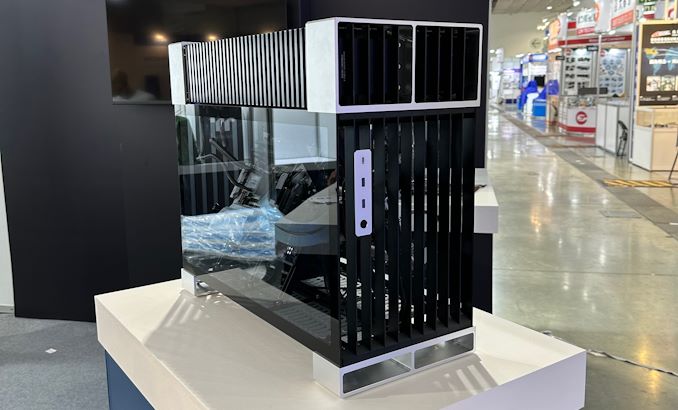
For Computex 2023, Streacom is demonstrating its SG10 passively-cooled PC chassis that can accommodate high-end PCs without requiring active cooling fans. The SG10 case is designed for fully-fledged gaming PCs, and is rated to passively dissipate up to 600W of heat – effectively using parts of the case as a giant heatsink, in place of traditional fans and through-case airflow dynamics.
Besides being a fairly beefy bit of metal in its own right, internally Streacom's SG10 is based upon loop heat pipe technology with a coolant featuring a very low evaporation point (think 40°C to 50°C). Steamcom uses an evaporator that circulates the liquid around the system and the condenser that dissipates the heat. When the temperature of either the CPU or the GPU reaches a high enough level, the cooling liquid transforms into gas and flows towards the condenser through a tube. There, it returns to its liquid state and flows back to water blocks. Importantly, this means that no mechanical pumps are involved.
The SG10 chassis has two cooling loops with two separate condensers — one for the CPU that's rated for up to 250W TDP (enough for Intel's Core i9-13900K), and another for the GPU rated for an up to 350W TDP (enough for NVIDIA's GeForce RTX 4080). The cooling loops for both the CPU and GPU are identical in all aspects, except for the way they are attached to the respective processors. Because retail CPUs are capped with an IHS and GPUs are not (being designed to make direct contact with their respective cooler), Steacom's water blocks have similar contact restricitons. All of which means the CPU block effectively has a lower performance rating. Meanwhile, as is the case with all custom GPU coolers, customers will need to make sure the SG10's blocks will fit their respective card.
One of the main challenges with all passive chassis is connecting water blocks to respective processors. As loop heat pipes can be flexible, Streacom solved this challenge in a pretty elegant way by using standard stainless steel or rubber pipes used on every closed-loop liquid coolers.
As far as aesthetics of the SG10 chassis is concerned, the case looks rather solid and has windows on both sides to show all the addressable RGB LEDs featured on modern PC components. The chassis is big enough to house an ATX motherboard, a graphics card that is up to 280 mm long, and five 3.5-inch/2.5-inch storage drives.
One of the quirks of SG10 is that is mounts its motherboard and graphics card at an angle, which complicates connection of monitors and peripherals. On the bright side, it can fit in any ATX power supply no matter how deep it is, and it has a front I/O panel with one USB Type-C and two USB Type-A connectors as well as an optional rear I/O panel with an HDMI, Ethernet, and USB ports.
While the chassis is set to have enough cooling capacity for modern gaming CPUs and GPUs, it is possible to install additional 120-mm fans below the condensers for extra performance (and perhaps compatibility with hotter processors and graphics cards).
According to Tom's Hardware, production of the Streacom SG10 is scheduled to begin this year. The anticipated price for the case, along with all the required cooling assemblies, is around $999.
Images Courtesy Streacom
Source: Streacom


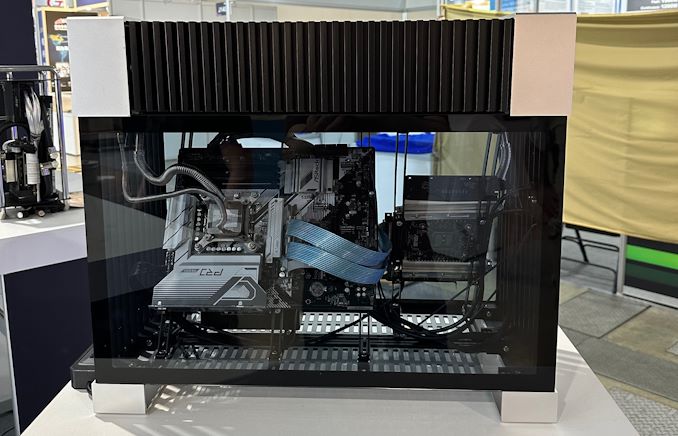
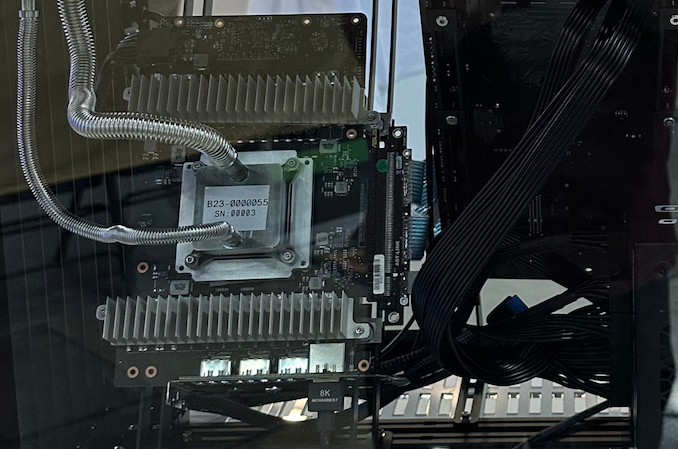
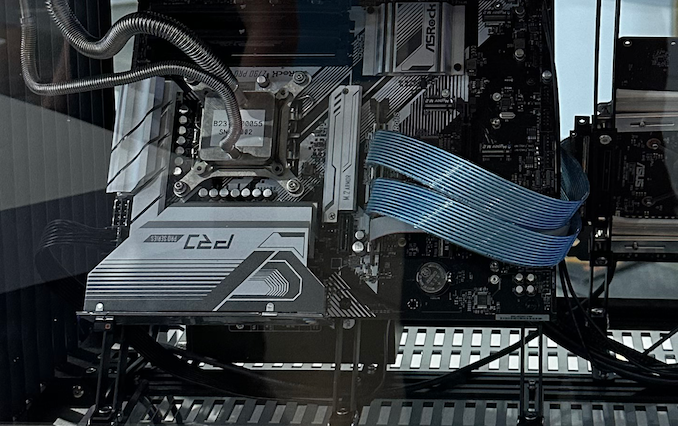
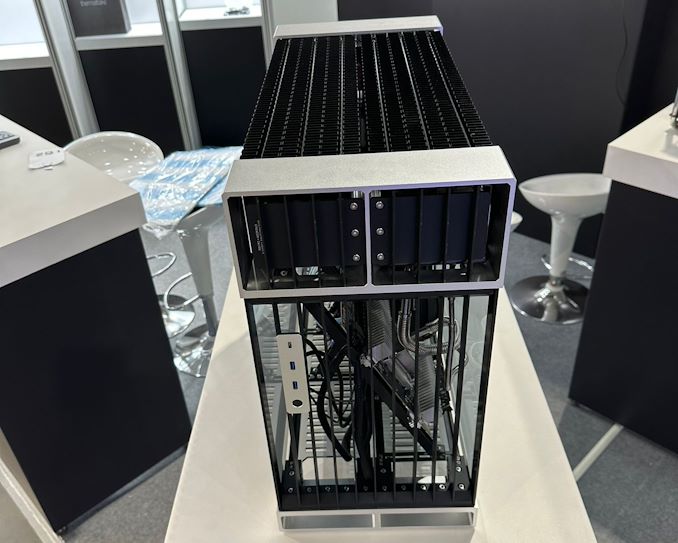








10 Comments
View All Comments
noobmaster69 - Thursday, June 1, 2023 - link
Looks like a great product, but I can’t see them selling many of them at that price point.Oxford Guy - Friday, June 2, 2023 - link
Audio engineers and people like Steve Jobs who appreciate silence.deporter - Thursday, June 1, 2023 - link
Pricey, but interesting.Now we just need to get rid of the damn coil whine...
Samus - Friday, June 2, 2023 - link
Stay away from Asus graphics cards and you're ahead of the field. Noisiest cards I've come across by a notable margin.PeachNCream - Friday, June 2, 2023 - link
Alternatively, one could just buy a more rational computer and save a bucket of money on initial costs, electricity, and residential cooling over the years while still enjoying entertainment if they pick reasonable things to ask their computer to do for them.Oxford Guy - Friday, June 2, 2023 - link
People with tinnitus will find this rational.abufrejoval - Tuesday, June 6, 2023 - link
I'm not so sure.It could go both ways: complete silence tends to incite the in-ear pre-amplifiers to increase their sensitivity resulting in more tinnitus generated noise, while properly matched white noise might get them to decrease their amplification.
It's hard to imagine coil whine will qualify as the proper white noise for many, but good fans might come closer to the "breeze" our ears evolved to ignore.
I used to think mine was coil whine until one day I decided to cut all power in order to locate the "offender"... that's when I noticed the ca. 15Khz beep actually came from inside my head.
Oxford Guy - Wednesday, June 7, 2023 - link
Silence does not aggravate nor cause tinnitus.kgardas - Friday, June 2, 2023 - link
Does anybody here remember Zalman TNN-500(AF)? Well, no need to mount boards diagonally and make ports inaccessible on both GPU and mainboard... IMHO Streacom should reconsider this design decision... Price is on level of Zalman so all right...Oxford Guy - Friday, June 2, 2023 - link
Yes, I remember it. I also remember the Calyos NSG S0 vaporware Kickstarter case and followed all of the furious comments over the many years that that product pretended to be in process. Apparently, the saga continues!